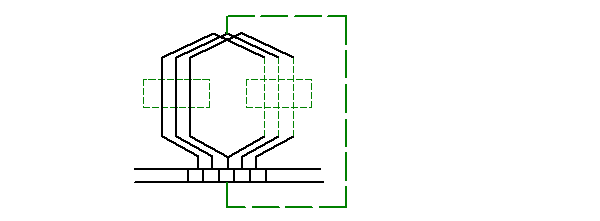Equipotential Connectors
The points ideally possessing the same electric potential in armature winding are often wholly or partly connected by short copper wire, which is termed equipotential connector.
Equipotential Connector Class A of Simplex-Lap Winding
Asymmetry in magnetic circuit, such as eccentric air-gap, causes circulating current in lap winding, increases losses and affects commutation in order. The equipotential connector Class A on the commutator of simplex-lap winding can solve this problem. The connection pitch of equipotential connector Class A of simplex-lap winding yp is equal to the number of commutator segments per pole pair:

Winding with yp = integer is termed symmetric winding. Only symmetric winding can have equipotential connector Class A.
No need for Equipotential Connector for Simplex-Wave Winding
Simplex-wave winding does not possess electrically equipotential points, therefore, can not have equipotential connector. On the other hand, simplex-wave winding does not need equipotential connector.
Equipotential Connector Class B of Multiplex-Wave Winding
There are electric equipotential points among different sets of simplex-wave windings of multiplex-wave winding. They can be connected to eliminate the nonuniform distribution of electric potential on commutator segments due to inequality of brush resistances. This is termed equipotential connector Class B. The connection pitch of equipotential connector Class B of multiplex-wave winding yp is equal to the number of commutator segments per branch pair in parallel:

Equipotential Connector of Multiplex-Lap Winding
For multiplex-lap winding, equipotential connector Class A is needed for each set of simplex-lap windings, equipotential connector Class B is needed among different sets of simplex-lap windings. There exist no electrically equipotential points among different sets of simplex-lap windings on the commutator side of armature, however, there exist electrically equipotential points among different sets of simplex-lap windings on different sides of armature as points A and B in the following figure.

Those points can be connected by conductors passing through inside armature.
No Need for Equipotential Connector for Frog-Leg Winding
For frog-leg winding, each pair of electrically equipotential points on commutator is connected by a lap coil and a wave coil in series. The connection acts as equipotential connector Class A for lap winding and as equipotential connector Class B for wave winding. Therefore, there is no need for extra equipotential connectors.
